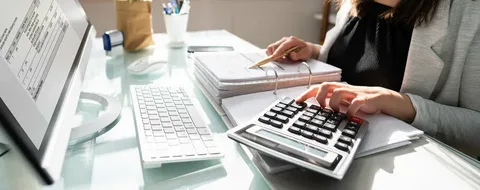Tax obligations can feel overwhelming for many individuals in the UK, especially those filing for the first time. While employees on PAYE often have their taxes deducted automatically, many others, such as the self-employed, landlords, or company directors, are required to file self-assessment tax returns.
This process allows HMRC to collect information about your income, expenses, and allowances, ensuring you pay the right amount of tax. For beginners, the paperwork, deadlines, and online submissions can be confusing, but with the right guidance, they become much more manageable.
Filing your tax return accurately is crucial to avoid penalties and interest charges. It’s also an opportunity to make sure you’re claiming all the reliefs and allowances you’re entitled to. Whether you’re working for yourself, earning from property, or have income outside of regular employment, this guide will walk you through the basics.
For those who find the process time-consuming or stressful, seeking help from UK-based tax professionals can make a big difference. Resources such as Account Ease are designed to support individuals and small businesses in handling their returns effectively.
Step 1: Check If You Need to File a Return
Not everyone is required to complete self-assessment tax returns. You’ll need to file one if:
- You are self-employed and earn more than £1,000 annually.
- You receive income from property rental.
- You are a company director or have income from dividends.
- You earn abroad or from savings and investments, not taxed at source.
- You have income over £100,000.
HMRC provides a simple online tool that helps you confirm whether you must file. If you fall into one of these categories, it’s best to register early to avoid missing deadlines.
Step 2: Register With HMRC
Before you can file a return, you need to register for self-assessment with HMRC. Once registered, you’ll receive a Unique Taxpayer Reference (UTR), which is essential for filing online.
Registration can take a few weeks, so don’t leave it until the last minute. After registering, you’ll be able to set up your online Government Gateway account, where you’ll file your return each year.
Step 3: Gather Your Records
Accuracy is key when submitting self-assessment tax returns. Collect all relevant documents before you start:
- Invoices and receipts if you’re self-employed.
- Bank statements showing income and expenses.
- P60s or P45s from employment
- Dividend vouchers and investment statements.
- Mortgage interest or rental income records if you’re a landlord.
Keeping everything organised throughout the year will make this step much easier. Many professionals recommend using accounting software to track income and expenses in real time.
Step 4: Complete the Online Form
Once logged in to your Government Gateway account, you’ll need to fill in the online tax return form. The sections you see will depend on your income sources. For example, a self-employed person will need to enter business income and expenses, while a landlord must declare rental income and allowable deductions.
Take your time to review each section carefully. Common mistakes include forgetting to claim eligible expenses or misreporting income. If you’re unsure about any part of the form, it may be wise to seek assistance from professionals, as errors could lead to penalties.
Step 5: Submit and Pay Any Tax Owed
After you’ve completed your return, submit it before the deadline. The online deadline is usually at the end of January for the previous tax year. HMRC will calculate the amount of tax you owe once your return is processed.
Payments can be made online via debit card, direct debit, or bank transfer. If you owe more than £1,000, you may also be required to make payments on account for the next tax year.
Submitting early gives you time to plan for any tax liability instead of rushing at the last moment.
Why Professional Support Can Help
For beginners, filing self-assessment tax returns can feel intimidating, especially when juggling multiple income sources. Mistakes not only risk penalties but could also mean paying more tax than necessary.
That’s why many individuals choose to work with UK-based tax experts. They provide guidance on allowable expenses, ensure compliance with HMRC, and simplify the entire process. If you want a reliable option, exploring services from Account Ease can save time and reduce stress, especially for those new to self-employment or managing additional income streams.
Final Thoughts
Filing self-assessment doesn’t have to be stressful if you understand the process and stay organised. From checking whether you need to file, registering with HMRC, gathering records, and finally submitting online, each step can be managed with a bit of preparation.
Still, for complete peace of mind, working with professionals who specialise in self-assessment tax returns can ensure accuracy and compliance while giving you back valuable time to focus on your work or business.
FAQs
- Who needs to complete a self-assessment tax return?
Anyone with income outside PAYE, such as self-employed individuals, landlords, or company directors, typically needs to file one. - When is the deadline for filing online?
The deadline is usually the end of January following the end of the tax year. - Can I file a return on paper instead of online?
Yes, but the deadline for paper submissions is earlier, typically at the end of October. Most people prefer online filing as it’s quicker and more convenient. - What happens if I miss the deadline?
You’ll face an immediate £100 fine, and further penalties apply the longer you delay. Interest is also charged on any unpaid tax.

